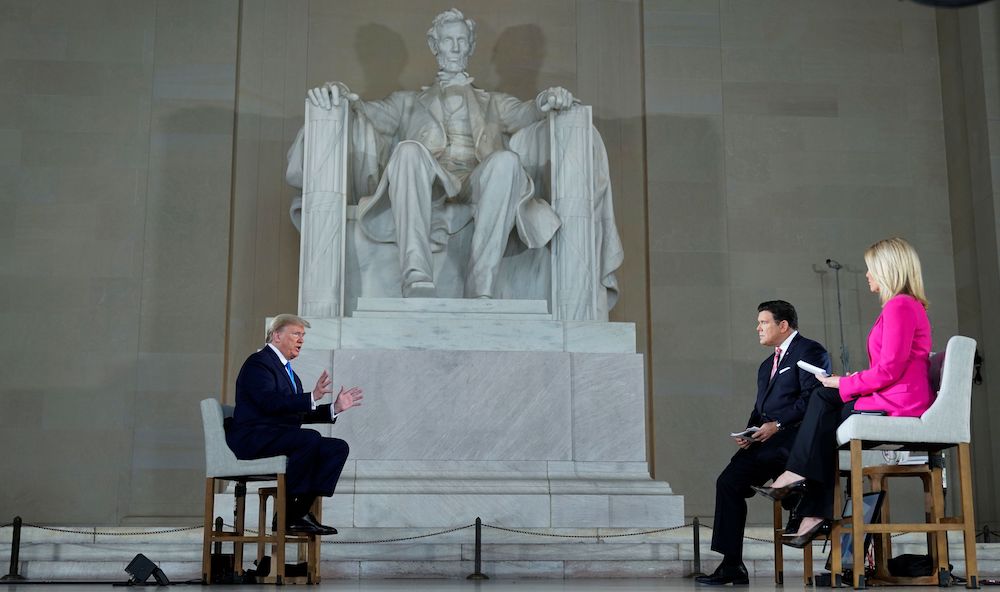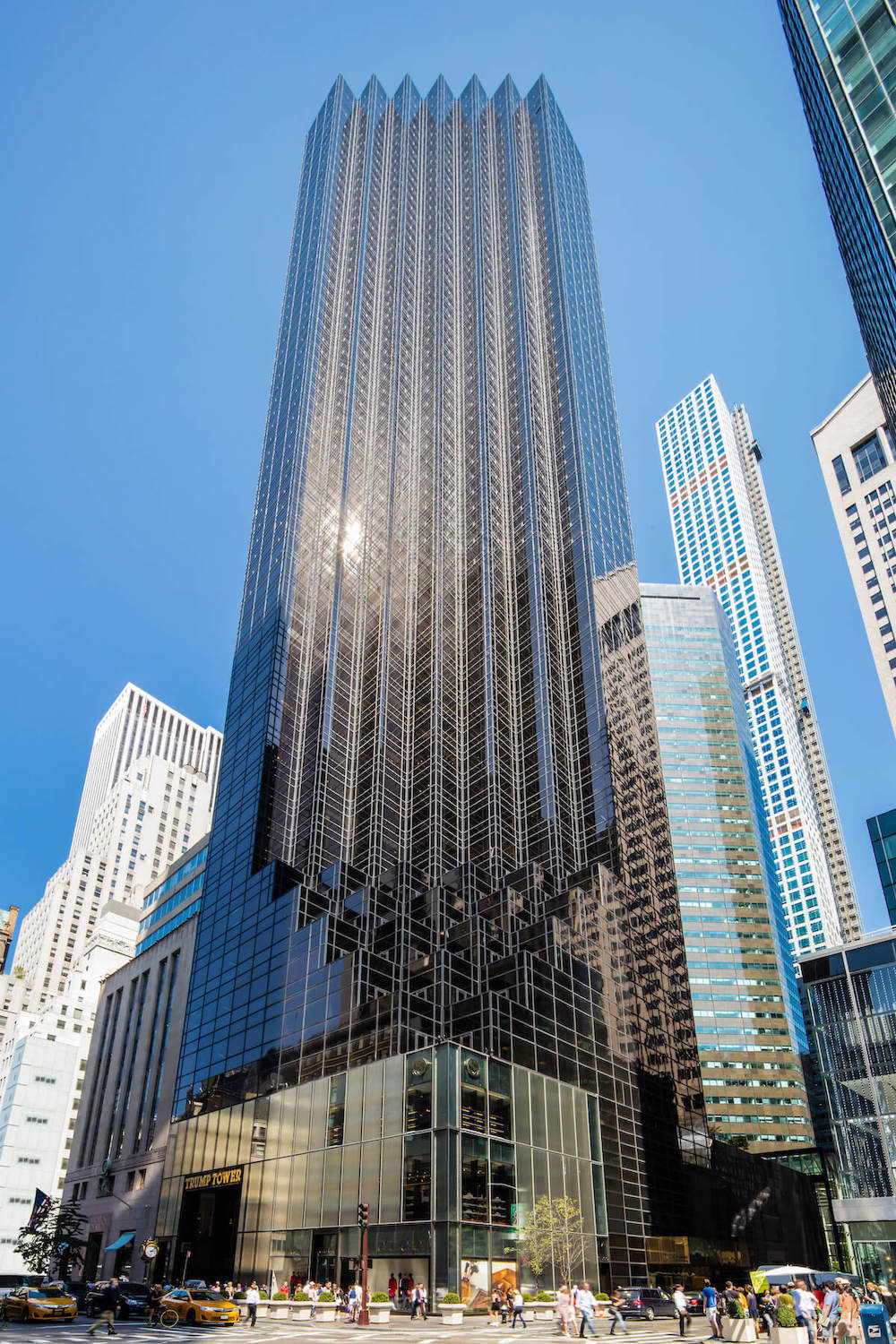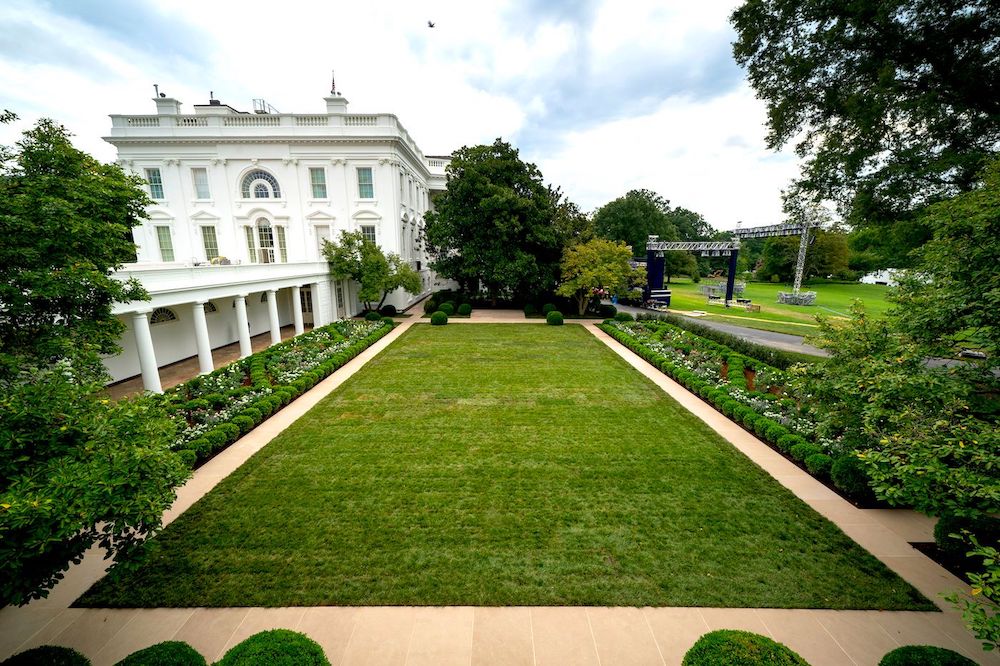Former President Donald Trump left office in disgrace, having incited an insurrection on January 6, 2021, the day Joe Biden was to be certified by Congress as the winner of the 2020 election. Trump made a speech to his crowd of MAGA misfits promising, in the style of cult leader Jim Jones, (although unlike Jones, Trump did not drink the Kool-Aid) to march with them on the Capitol building. Instead, Trump wimped out and watched the deadly assault on TV from the comfort of the White House while failing to send out the National Guard.
In view of the horrific acts of the last months of the Trump regime, a federal architectural executive order (EO) may seem to be a somewhat trivial matter. However, the EO Trump issued on December 21, 2020, was part of a number of so-called “midnight regulations” promulgated during his final days, including a series of regulations issued by the EPA stripping Americans of many vital environmental protections.

Donald Trump during in a Fox News virtual town hall at the Lincoln Memorial, May 3, 2020. Photo: REUTERS/Joshua Roberts.
The “beautiful buildings” EO had been in the planning stages for months, despite criticism from many architectural professionals. Trump favors neoclassical architecture, including such landmarks as the Lincoln Memorial, the Jefferson Memorial and the Capitol building (which he caused to be nearly destroyed). What seems to have ticked off Trump was the federal courthouse building spree over the last 20 years that gravitated toward modernist and postmodernist styles. (Trump is quite familiar with courthouses, having been involved in over 4,000 lawsuits.)
Ironically, Trump didn’t seem to grasp that many of his own glass skyscrapers were built in the modernist style, although few architects would consider the Trump Tower an improvement over the previous building on the 5th Avenue site—the Bonwit Teller building—an Art Deco gem that Trump rushed to demolish before the NYC Landmarks Preservation Commission could save it. Trump Towers are late-stage modernist glass walled boxes—completely bland and forgettable.

Trump Tower in New York City, 721 Fifth Avenue.
Trump yearned for monumental and imposing government buildings in the neoclassical style favored by Hitler. The Führer’s architect Albert Speer’s massive Reich Chancellery and other planned, but never built, grandiose structures were intended to glorify the regime—matching the preferred style of dictators such as Mussolini, whose hideous white marble Victor Emmanuel II National Monument scars the center of the Eternal City.
The Trump EO states that “Applicable Federal public buildings should uplift and beautify public spaces, inspire the human spirit, ennoble the United States, and command respect from the general public.” The order does not define “beautify.” “Beautiful” is frequently used in Trump’s limited vocabulary—he famously boasted that his Mar-a-Lago chef baked the most “beautiful” chocolate cake served at a 2017 banquet for China’s President Xi Jinping.
The EO specifically states that the “Brutalist” style is disfavored—maybe the one thing that is sensible. The dreadful Brutalist FBI Headquarters on Pennsylvania Avenue are falling apart and should be demolished as soon as possible. However, the other specified verboten style in the order—Decontructivism—would rule out almost anything designed by starchitect Frank Gehry, including his recently opened Dwight Eisenhower monument on the National Mall.

E. Barrett Prettyman U.S. Court House, 333 Constitution Avenue, September 10, 2010. Photo: Diego M. Radzinschi/THE
NATIONAL LAW JOURNAL.
The day the EO was released, the prestigious American Institute of Architects was ready with a press release which “unequivocally” opposed the order and said members were “appalled with the administration’s decision to move forward with the design mandate” one month prior to the end of the Trump government. AIA members sent the White House over 11,000 letters condemning the EO.
Fortunately, President Biden should be able to nullify the Trump order with a skillfully drafted order of his own, although it may take a while, since his priorities are to marshal a federal government assault on the COVID pandemic, something Trump utterly failed to do. However, on the day after Trump’s EO was promulgated he appointed four new members to the US Commission of Fine Arts, making the commission completely white and male. It may be hard to reverse these appointments since they are for four-year terms and members may only be removed for cause.
The arts commission has wide-ranging sway over federal architectural designs. Three of the members Trump appointed to the commission are ardent traditionalists. One of them, Perry Guillot, a landscape architect, had a hand in Melania Trump’s widely panned renovation of the White House Rose Garden. Another architect, Rodney Mims Cook of Atlanta, specializes in what can only be described as plantation-style architecture—think Tara from Gone With the Wind—fitting right into Trump’s retro-vision of how to Make America Great Again.


